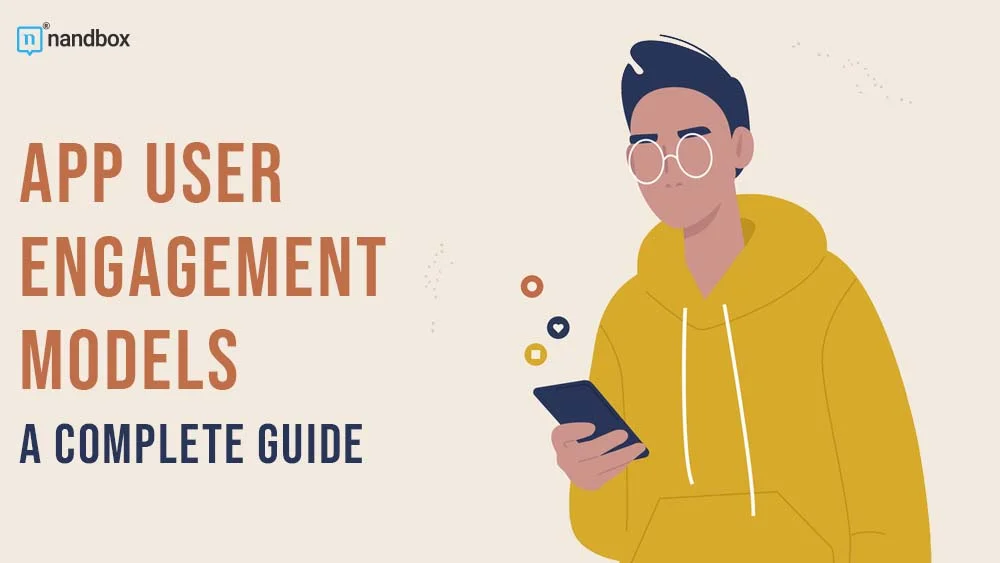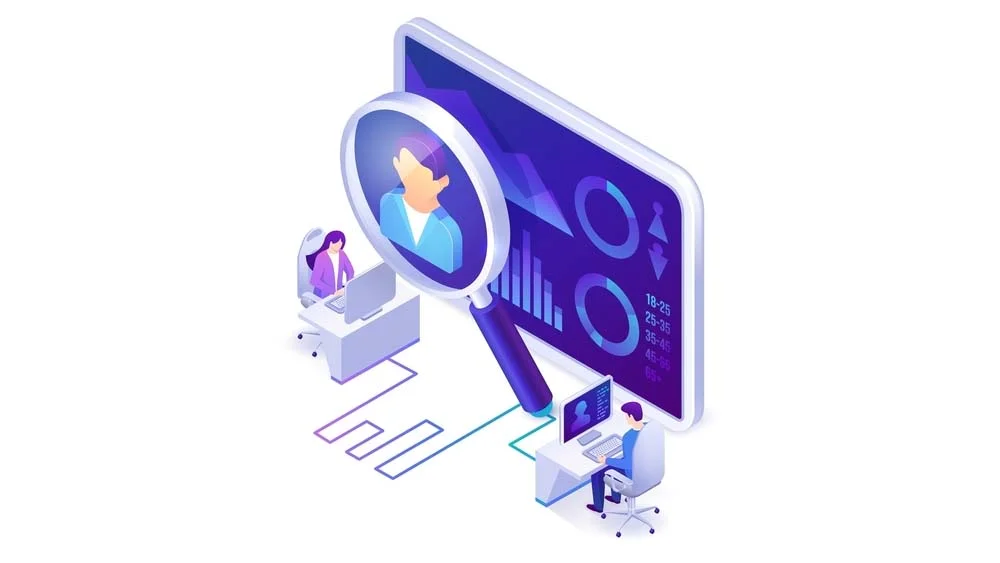As customers are the core and main part of any business, the same applies to applications. Users are the core and heart of any application. This is mainly because the majority of the app development process is 100% user-centric, where developers take users’ needs and demands into consideration to a great extent. Thinking about strengthening user engagement takes place the moment developers start the first step of the process. And it certainly doesn’t end there; it is an endless process. One way of strengthening and improving user engagement is by incorporating a proper and suitable customer engagement model. Want to learn more about customer engagement models and how they can take your application to the next level? Well, you will have to read this article and dive deep into the world of app user engagement models and how you can choose the best one for your app and business.
What Are Engagement Models in App Development and What Does It Mean for Users?
It is so hard to acquire users for an app, especially if it doesn’t gain much recognition and is new to the market. However, it is very much attainable and possible by applying strategies like app store optimization, paid advertising, social media marketing, and more. But there is something way more difficult. What is that, you may ask? This would mean retaining users and keeping them engaged.
As we mentioned before, user engagement and retention are always on the minds of developers and businesses from the first minute. There have been a lot of cases where applications could acquire millions of users but fail miserably at keeping them hooked. Many factors drive users’ engagement in apps. For instance, users usually favor apps that have regular updates. These regular updates don’t have to include new features, but things like improvements and regular bug fixes are appreciated. Another factor is the user interface. A user interface is the first thing that a user comes into contact with. An intuitive and appealing interface can elevate the user experience, thus improving user engagement to a major extent.
So, how do engagement models provide a solution? Customer engagement models are approaches where businesses and customers have more up-close relationships. In these approaches, the relationship between a business and its customers is not limited to them using a product, whether it is an app or anything else. It also includes keeping in touch and encourages two-way communication where feedback and support are exchanged.
App user engagement models were only related to businesses with products and services. However, applications have become a major part of many businesses now, have many users, and are offered as a part of their products. Therefore, they are part of applications as well.
Importance of Implementing User Engagement Models for Your Mobile App
Implementing user engagement models for your mobile app is crucial for its success and long-term viability. Engagement models are strategies and techniques designed to keep users interested, involved, and actively using your app. Here are some key reasons why implementing these models is important:
User Retention
Keeping users around is a major goal of many app user engagement models. Users now have an abundance of options, with millions of apps from which to pick. By keeping users interested and involved, an app can lower its churn rate.
Monetization
Revenue from in-app purchases, advertisements, or subscriptions is directly correlated with the level of user activity in apps that rely on these methods. More in-app purchases, ad clicks, and paid subscriptions can be expected from users who are currently engaging in your app. This is a normal result of using app user engagement models.
Positive User Experience
Users who actively participate in the good or service tend to have a better overall opinion of it. If users enjoy using an app, they are more likely to give it five stars and spread the word about it. This in turn boosts the app’s visibility and popularity.
User Data and Analytics
Having a dedicated user base means you’ll have access to more information about their behaviors, likes, and dislikes. This data can be used to make adjustments to the app that better meet the requirements of its users.
App Store Rankings
Rankings in app stores take into account how actively users are choosing to interact with apps. The greater the interest that users show in your app, the higher it will rank in search results, increasing the likelihood that others will download it.
Virality
Users who are actively involved with the app are more likely to recommend it to others and to post about it on social media. Having a dedicated user base can make for some powerful advocates through word-of-mouth marketing.
Feedback and Iteration
Having active users who are willing to provide feedback is crucial to the development of any app. By taking into account the feedback and criticisms of your target audience, you can improve your app’s usability and appeal and make it more engaging and intuitive.
Long-Term Sustainability
Long-term success is more likely for an app that encourages engagement. Constantly losing and being abandoned by users can be expensive and inadequate, but engagement models can help keep your audience faithful. Therefore, they create long-term and sustainable results as they increase retention rates.
Competitive Advantage
Your app can gain an edge over the competition if you use successful engagement models. A competitive advantage can be gained in a crowded app store by developing features that keep users interested and engaged.
Adaptation to Changing Trends
Apps that use engagement models tend to be more resilient over time, serving users even as their demands and requirements change. Apps that fail to engage users effectively may become obsolete. That is why it is important to incorporate engagement models to be able to adapt to tech changes easier.
Exploring The Stages of Customer and User Engagement
If you think that user and customer engagement happen so suddenly in one shot, then you are totally wrong. The process of engagement is a complicated one. Well, it’s not as complicated as you’d imagine, not like the app development process, but it has many sides that we have no clue about. The customer and user engagement cycle has many versions and forms. Some experts say it is seven stages, and some say it is only four. In this article, we will stick to the average and explore the five stages of customer and user engagement.
Unawareness
The first stage is unawareness. The unawareness stage is when your targeted customers and users are completely unaware of your business or applications. This poses a problem because this state means that the users have no idea about the problems that your application may tackle and solve.
Acquisition
The second stage is acquisition, or some people may call it discovery. In this stage, the efforts that businesses exert to make their applications more visible with strategies like social media marketing start to yield some results. Users then start to be aware of the problem that your application tackles and that it might be a great solution for it. They also take some steps toward the application by giving it a go.
Onboarding
The third stage is onboarding. Once users begin interacting with the application, the onboarding process educates them on its capabilities and best features. This is essential to make sure the first impression is a good one.
Engagement
The fourth stage is engagement. To be engaged, a user must make consistent and intentional use of the application. Users return often, use various features, and benefit from the site. They appreciate its practicality and pleasant attributes.
Retention/Churn
The last stage is one of two things. It is either retention or churn, which depends on the quality and functionality of the application. In the retention stage, you could notice users start coming back to the app. Thus, user engagement is maintained through the use of features such as individualized experiences, real-time updates, and push notifications.
As per churn, you notice that users start being inactive, deactivating their accounts, or installing the application. In this case, reactivation strategies are implemented. The purpose of reactivation strategies in this case is to get inactive users to return. Offers, emails, or content that is specifically tailored to users are all examples of this.
Top User/Customer Engagement Models You Should Know About
1. High Touch
The high-touch model is what the name may imply. It is mainly used throughout the onboarding stage, as it aims to introduce the application to potential users. High touch maximizes the idea of making the relationship between the business or app owner and users as close and personal as possible. This involves high-level interactions that can be face-to-face at some point, tailored features, premium services, and many more. Additionally, proactive support channels are also a major part of such a model.
2. Low Touch
As we discussed the high-touch model, we are going to discuss the opposite. The low-touch model is also used, especially at the onboarding stage. It also involves interactions between businesses and users, but on a smaller scale. This includes using user management software that offers automation and email marketing campaigns. introductory videos, walkthroughs, documentation, and many more.
3. Hybrid
Now that we have discussed high- and low-touch models, why don’t we take the best of both worlds? The hybrid engagement model involves mixing and matching between the two previous models. For instance, they might use the software for exceptional automation capabilities. Meanwhile, this model will also emphasize personalized features and services, support, and gaining feedback from close interactions with users.
How Can You Choose a Suitable Engagement Model for Your App and Users?
For your app to be successful, you must select an appropriate customer engagement model. The features of your app, the taste and preference of your intended users, and your ultimate business goals are just a few of the considerations that should go into making a choice. For instance, the “High Touch” model prioritizes personalized, human interactions to create deep and lasting relationships with customers. This approach would be ideal for businesses and apps that intend to target a large segment of users. This also means apps with more luxurious capabilities that might come with a high price tag. Since these apps target only people who would be capable of paying for them, they have to offer the most personalized experience and prioritize close interactions as much as possible.
The “Low Touch” model, on the other hand, emphasizes digital channels and automation to provide quick and easy assistance. This model is best for SaaS businesses and apps that target a large base of users. As they would have to be able to scale instantly and be responsible for an enormous number, the automation capabilities that this model offers are ideal. Choosing the best engagement model for your app requires thinking about the type of app it is and how much personalization and interaction the users can reasonably expect. Additionally, you would need to utilize marketing strategies to raise the app’s visibility, thereby attracting a larger number of users and maintaining a high level of satisfaction.






